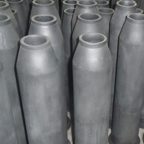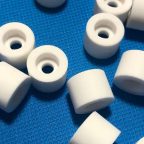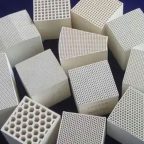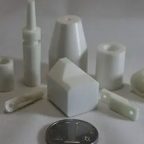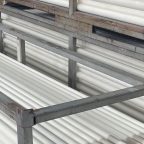Pintejin Ceramics Factory specializes in ceramic rods, ceramic plates, structural ceramics and other components. Our factory can perform the finishing of ceramic parts. The basic method of ceramic material machining: ceramic materials usually need to go through blank cutting, grinding, grinding and polishing. parts.
(1) There are three types of mechanical cutting methods commonly used in cutting:
- 1) Fixed abrasive cutting. Cut with a diamond blade or band saw.
- 2) Free friction cutting. Cut with a disc saw, band saw with diamond abrasive or high-speed abrasive jet impact.
- 3) Single edge cutting. Cut with single-grain diamond.
Polished zirconia ceramic needle
In order to improve the efficiency and quality of cutting, especially for some blanks with complex shapes, hydraulic cutting should be used instead of mechanical cutting.
(2) Diamond grinding wheels are almost always used in grinding. Compared with grinding metal materials, the biggest feature is that the normal grinding force is much larger than the tangential grinding force, which is generally 5 to 10 times larger. When face grinding, it can even be 20 to 30 times larger. Therefore, the grinding machine must be rigid enough, and the sharpness of the abrasive grains must be maintained. At the same time, the pressure between the grinding wheel and the workpiece must exceed the critical pressure value (2-5MPa) to ensure normal grinding.
The particle size of diamond grinding powder used in grinding ceramics is: coarse grinding 0.25~0.125mm (60#~120#), semi-fine grinding 0.125~0.9mm (120#~180#). Fine grinding 0.075~0.04mm (240#~W40). Usually the grinding wheel speed is 15-25m/s (metal bond) or 20-30m/s (resin bond). The workpiece feeding speed is 1.15m/min, and the cutting amount is 1-2μm. Water-soluble emulsion or low-viscosity oil-based cutting fluid should be used during grinding to prevent powdery chips or falling abrasive particles from remaining on the surface of the workpiece, causing surface damage and accelerated grinding wheel wear.
3) Grinding and polishing It is the main method for precision and ultra-precision machining of ceramic materials. The allowance is removed by mechanical friction or mechanochemical action between the grinding tool and the workpiece, which causes tiny cracks on the surface of the workpiece, which gradually expand and peel off from the parent material to achieve the required dimensional accuracy and surface roughness. When fine particle size, soft lap, low grinding pressure and low relative speed are used, high surface quality and precision can be obtained, but machining efficiency will be reduced.
Pintejin machining ceramic service include : Alumina Ceramic Parts, Zirconia Ceramic, Silicon Carbide Ceramic, CNC Machined Aluminum Nitride Ceramic, Machinable Ceramic Parts, Glass Ceramic,Macor Ceramic,Powder Metallurgy Dies,Ceramic Injection Molding,Ceramic Dry Pressing,Ceramic Extrusion Dies
